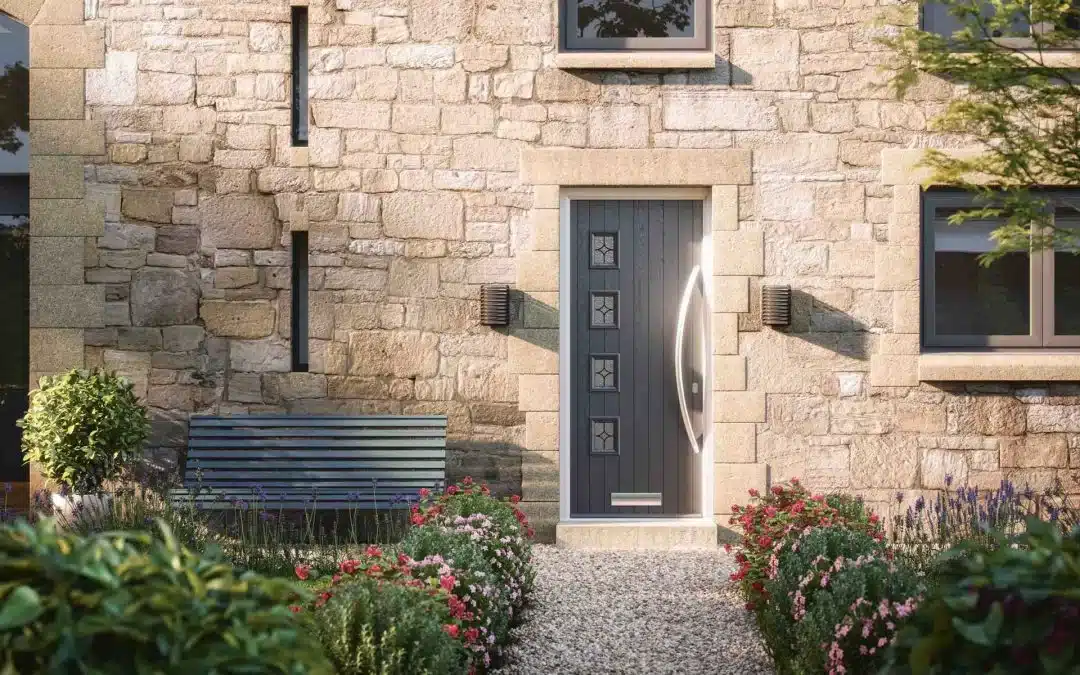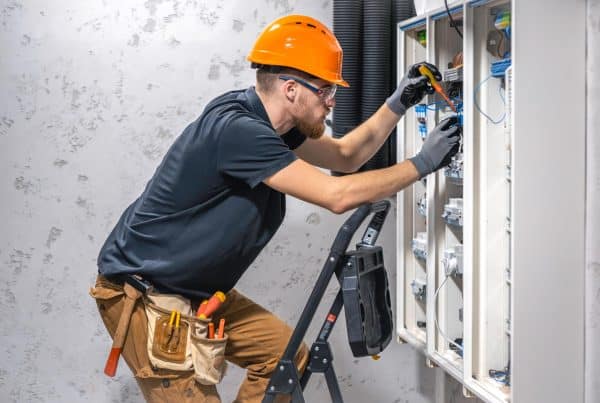Composite doors have gained significant popularity in recent years as versatile and reliable options for home entrances. With their combination of durability, aesthetics, and energy efficiency, composite doors have become a top choice for homeowners seeking a long-lasting and secure entrance solution.
This guide will explore what composite doors are, their unique features, and the installation process involved.
What Are Composite Doors?
Composite doors are a type of entrance door that is manufactured using a combination of materials, such as uPVC (unplasticised polyvinyl chloride), timber, insulating foam, and glass-reinforced plastic (GRP).
The blend of these materials results in a door that offers superior strength, security, and weather resistance by taking all of the great features that these materials can offer.
For instance, wooden doors are usually prone to warping and cracking in changing temperatures, but the multiple layers of other materials allow a composite door to be much more resistant to it. This means that the 48mm solid timber core used will be energy efficient and secure without the downsides of using wood.
A composite door also uses ABS 3-star anti-snap locks that are auto-firing, meaning you don’t have to worry about lifting the handle to secure your home. It also adds to the already strong materials to make any property extremely safe.
Key Features of Composite Doors
- Durable: A composite door is extremely durable, especially when compared to other materials such as uPVC. The combination of materials used in their construction makes them resistant to warping, twisting, and fading.
Unlike traditional wooden doors, composite doors do not require regular maintenance like sanding or painting.
- Security: Home security is of paramount importance, and composite doors provide peace of mind. The robust construction and multi-layered design make them extremely difficult to break or force open.
Additionally, composite doors often come with advanced locking mechanisms, including multi-point locks, deadbolts, and anti-snap cylinders, further enhancing their security.
- Energy Efficiency: Composite doors excel in insulation, helping to reduce heat loss and lower energy bills. The insulating foam core and weatherproof seals effectively prevent drafts and minimise heat transfer.
By maintaining a consistent indoor temperature, composite doors contribute to a more comfortable and energy-efficient home.
- Style: The aesthetics of composite doors allow them to be customised with tons of freedom, so they are able to fit any kind of property. They come in various colours, finishes, and panel configurations, including options that mimic the appearance of traditional wooden doors.
The versatility of composite doors ensures they can enhance the curb appeal of any property.
Installation Process
Getting new composite doors fitted is typically a professional job, although experienced DIY enthusiasts can undertake the task with the right tools and knowledge. Here is a general overview of the installation process:
- Measurements and Ordering: The first step is to measure the existing door frame accurately. This ensures the new composite door will fit perfectly. Once the measurements are taken, the door can be ordered from a trusted supplier, considering the desired design, colour, and additional features such as glazing options and door furniture.
- Removal of the Old Door: The old door is carefully removed, taking care not to damage the surrounding frame. This may involve unscrewing hinges, removing any sealant, and cutting through nails or screws that secure the frame to the structure.
- Preparing the Opening: The door opening is then inspected to ensure it is structurally sound and free from any defects or rot. If necessary, repairs or adjustments may be made to the frame or threshold to create a solid foundation for the new composite door.
- Fitting the Composite Door: The new composite door is placed into the opening and levelled to ensure it is square and plumb. Packers or shims may be used to achieve the correct alignment. The entry is then fixed in place using screws, ensuring it is securely attached to the frame.
- Finishing Touches: Once the door is installed, any gaps between the frame and the wall are sealed to prevent drafts or water ingress. The hinges, handles, and other door furniture are fitted, ensuring they are aligned correctly and operate smoothly.
- Testing and Adjustments: The final step involves testing the functionality of the door. This includes checking the operation of the lock, handle, and any additional features such as a letterbox or peephole. Any necessary adjustments are made to ensure the door operates smoothly and provides a tight seal.
Installing Composite Doors in Your Home
Composite doors are a highly durable, secure, and aesthetically pleasing option for home entrances. Their blend of materials offers numerous benefits, including enhanced security, energy efficiency, and low maintenance requirements.
The installation process involves careful measurement, removal of the old door, fitting the new composite door, and making necessary adjustments to ensure optimal performance.
By choosing a composite door and following proper installation procedures, homeowners can enjoy a stylish and long-lasting entryway solution for their homes.








